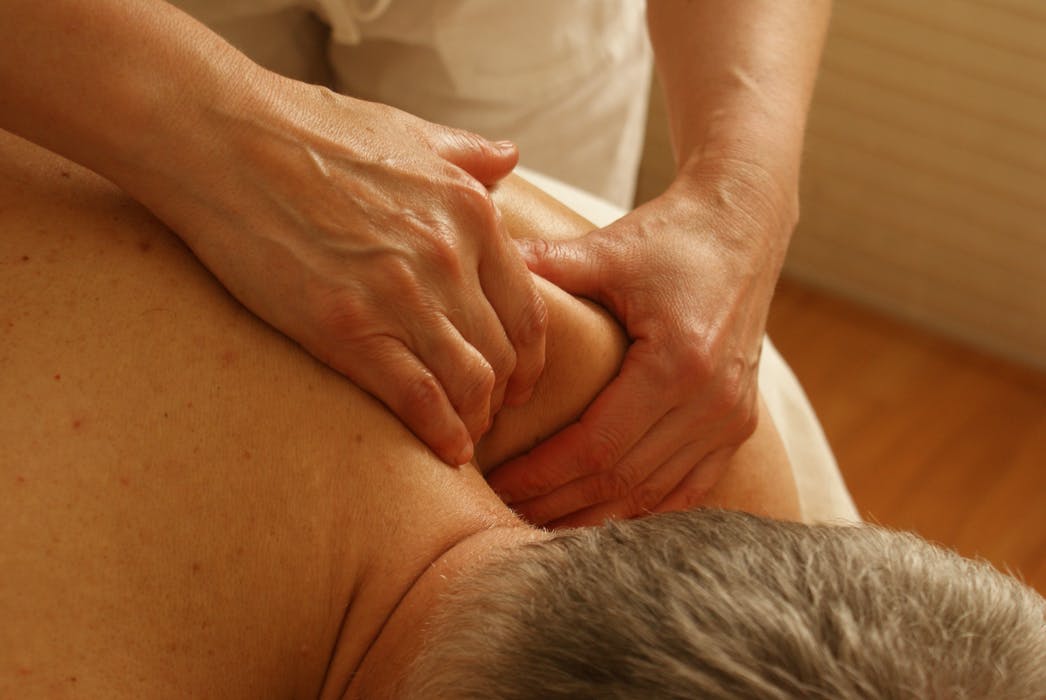|
BOOK NOW |
ASK ABOUT YOUR PAIN |
Home > Blog > Physiotherapy & Hand Therapy > Complex Regional Pain Syndrome (CRPS) Physiotherapy
Complex Regional Pain Syndrome (CRPS) Physiotherapy

Complex Regional Pain Syndrome (CRPS) can be a painful and disabling condition.
CRPS generally arises from a seemingly minor injury, such as a
- scrape and bruises
- sprain (eg ankle sprain)
- strain (eg hamstring muscle strain)
and they can result in the syndrome that is defined as being complex and regional (symptoms are generally in 1 region of the body), and painful.
It is estimated that 80,000 people living in the United States are diagnosed with CRPS each year. A multi-disciplinary approach to treatment is currently recommended, consisting of care from physicians, psychologists, and definitely physiotherapists.
What is Complex Regional Pain Syndrome (CRPS)?
CRPS, formally known as RSD (regional sympathetic dystrophy), is considered to be a multi-system disorder characterized by
- severe pain
- pathological changes of the bones, joints, and skin
- excessive sweating
- tissue swelling and
- hypersensitivity to light touch
It is generally categorized as one of 2 types:
- Type 1: not resulting from a distinct nerve injury
- Type 2: resulting from a distinct nerve injury
CRPS involves the central nervous system, autonomic nervous system, and immune system.
Although studies and research has not yet determined exactly why CRPS occurs, physiotherapy has proven to be quite beneficial in managing symptoms, improving function, and increasing the quality of life for people with CRPS.
How Does Complex Regional Pain Syndrome (CRPS) Feel?
Most people with CRPS experience:
- Extreme sensitivity to light touch—a symptom known as tactile hyperesthesia. This causes even very common everyday activities, such as wearing clothing, bathing, or applying skin creams or lotions to become very difficult and uncomfortable.
- Significant pain, often described as burning, stabbing, grinding, or throbbing that is often more extreme than what would be expected from the original injury.
Specific signs and symptoms may include:
- Pain and sensitivity to touch.
- A higher or lower skin temperature in the affected limb.
- Discoloration of the affected limb.
- Awkward positioning of the affected limb as a result of sustained muscle contractions. (This condition, known as dystonia, occurs in about 25% of CRPS cases.)
- A change in the appearance of hair and nails on the affected body part.
- Tissue and joint swelling.
- Heightened release of sweat by the affected limb.
Other symptoms reported by people with CRPS include increased
- difficulty in sleeping
- decreased sexual desire
- ncreased irritability or agitation
- depression and
- memory loss
How Is It Diagnosed?
A diagnosis of CRPS is generally made by a doctor or physician who is familiar with the syndrome, such as a neurologist. Your physician may first try to rule out possibility of other conditions, such as Lyme disease or peripheral neuropathy, before making a definitive diagnosis.
Our senior physiotherapist also may be the first practitioner to recognize the
onset of CRPS. If your physiotherapist suspects the condition may be
present, they will discuss those concerns with you and your
doctor to determine the best plan of action for your care.
How our senior Physiotherapists can Help?

Physiotherapists play a very important role in the treatment of CRPS. We will work with you to develop a treatment plan to help address your specific condition (which varies from individuals to individuals).
Because the symptoms of CRPS vary, physiotherapy management and approach to care will also vary. CRPS treatment is generally based on the chronicity and severity of the episode.
Treatment for CRPS may include:
Movement therapy.
Mobilization of the affected body part, begun immediately following diagnosis of CRPS, is crucial to help prevent contractures (the permanent shortening and tightening of muscles or joints), and to maintain function. Physiotherapy may include a combination of passive and active movements; the best treatment for your specific condition will be determined by our senior physiotherapists.
Graded Motor Imagery (GMI).
All movements, even the smallest ones, are a result of complex computations of various networks within the brain. GMI is a rehabilitation process often used to treat disorders, such as CRPS, that result in pain and movement problems. GMI exercises the brain in measured and monitored steps, and includes left and right discrimination training, motor imagery exercises, and mirror box therapy.
Mirror Box Therapy.
Usually introduced as the third step in a typical GMI protocol, mirror box therapy requires an individual to exercise their unaffected limb in front of a mirror, while watching the reflection, as if their affected limb were performing the exercise.
Note: High-level physical activities and thermo-electric modalities (such as, ice, heat, electrical stimulation, or ultrasound) are not recommended in the treatment of CRPS, and actually can be harmful. Finding providers who commonly treat CRPS is key to receiving the best treatment.